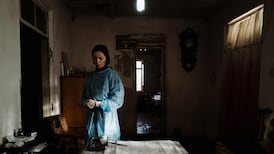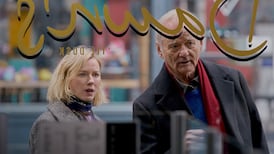Alejandro G Iñárritu, winner of two best director Oscars, has broken new ground at the Cannes Film Festival with a virtual reality installation entitled Carne y Arena (Virtually Present, Physically Invisible).
The piece, the first in the medium to be presented at Cannes, is one of several projects in the official selection to address refugee issues.
Vanessa Redgrave's first film as director, Sea Sorrow, a documentary essay detailing the stories of various migrants, has premiered to respectable reviews. Michael Haneke's Happy End, set in Calais during the recent migration crisis, will screen on Sunday.
The Iñárritu piece is a real oddity. The Irish Times was driven from central Cannes to a hangar near the airport where the Mexican director of The Revenant and Birdman, was there to shake hands and talk us through the experience. The exhibit will have its formal public opening later in Milan.
“That is a wall to keep everyone out,” he laughed, gesturing towards a wooden structure. A Trump reference?
The attendees are initially left alone in a small room littered with abandoned shoes and small items that have been collected along the border between the US and Mexico. We are asked to remove our own footwear and wait for an alarm to sound before making our way into the space. Technicians fit us with virtual-reality headsets and invite us to move at will once the experience begins. You find yourself apparently abandoned in the desert. Peering into the distance, you eventually make out an older woman hobbling towards you.
A people smuggler appears to have lost patience with her. Soon, a small party of migrants group around the visitor before – to the ear-grinding racket of helicopters and SUVs – US border agents arrive and brandish firearms menacingly. You are able to move freely around and breathe in the participants’ furious or desperate faces. The urge to raise your hands when ordered is irresistible.
Their life-stories haunted me, so I invited some of them to collaborate with me in the project
Working with his regular cinematographer Emmanuel Lubezki, Iñárritu cast the film with real-life migrants who act out their own stories for the visitor. It would be facetious to suggest that the film genuinely recreates the experience of being so frighteningly inconvenienced. But it comes closer than any conventional medium could manage. You are alone. By moving through the three-dimensional space, you become your own editor and cameraman.
On the way out to retrieve your shoes, you can watch testimonies from the various participants.
“During the past four years in which this project has been growing in my mind, I had the privilege of meeting and interviewing many Mexican and Central American refugees,” Iñárritu said. “Their life-stories haunted me, so I invited some of them to collaborate with me in the project.”
Elsewhere, the festival played out in more traditional fashion.

Critical hit
Todd Haynes's Wonderstruck, a temporally bifurcated family film starring Julianne Moore, premiered to warm, if not ecstatic, notices. Haynes wowed Cannes two years ago with the bewitching Carol.
The critical hit of the main competition to date has been Alexey Zvyagintsev’s searing Russian drama, Loveless. That films looks like the favourite for the Palme d’Or at this very early stage.
The first scandal concerned, of all things, a dress worn by Miri Regev, the right-wing Israeli culture minister, at the opening ceremony. The garment featured an image of Jerusalem to celebrate, she explained, “50 years since the liberation and reunification” of that city.
Most of the world regard east of the city as under Israeli occupation.
Haaretz, the liberal Israeli newspaper, described the gesture as “tasteless, aggressive and colonialist”.
The festival continues.


















